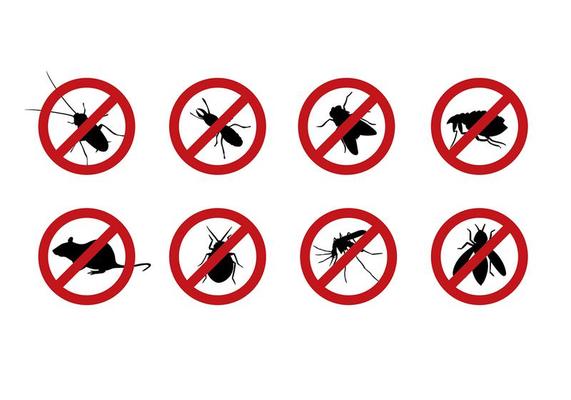Expert A1 Charlotte Bed Bug Exterminator - High Quality Service Ensured
Expert A1 Charlotte Bed Bug Exterminator - High Quality Service Ensured
Blog Article
Bed Pest Therapy Failure: Comparing Chemical Vs. Non-Chemical Solutions
In the world of pest control, specifically when handling the consistent problem of bed pests, the selection between chemical and non-chemical treatment options can be a pivotal one. Both strategies offer distinctive advantages and drawbacks, influencing elements such as efficiency, security factors to consider, and general price. By examining the nuanced details of each method, a clearer understanding of which course to pursue in attending to a bed pest infestation can be acquired.
Efficiency of Chemical Therapies
Chemical therapies for bed pest invasions have actually been widely recognized for their fast and potent efficacy in eliminating these insects. When thinking about the efficiency of chemical treatments, it is critical to understand that they can offer a thorough and quick solution to a bed bug issue. Expert pest control operators frequently depend on pesticides to target bed bugs at different phases of their life cycle, consisting of eggs, fairies, and adults. These chemicals commonly work by interfering with the bed insects' nervous system, causing paralysis and ultimate fatality.
Moreover, chemical treatments have the advantage of offering recurring impacts, indicating that they can remain to eliminate bed insects also after the preliminary application. This residual activity is particularly valuable in combating any type of prospective re-infestations. In addition, the quick activity of chemical treatments can bring alleviation to people facing extreme bed insect problems, allowing them to gain back control of their space swiftly.
Security Concerns With Chemical Solutions
One critical element that requires mindful factor to consider when using chemical solutions for bed pest therapy is making sure the safety of passengers and the setting. Direct exposure to certain chemicals utilized in bed pest treatments can lead to respiratory system issues, skin irritability, or various other adverse reactions, specifically in individuals with pre-existing conditions or level of sensitivities.
Moreover, the ecological impact of chemical services is an additional considerable consideration. Some pesticides utilized in bed insect treatments may be unsafe to helpful bugs, wildlife, and environments if they leach into the dirt or water supply. It is important to utilize chemical therapies judiciously, adhering to safety and security guidelines, and taking into consideration much less harmful options to minimize these dangers and make sure the risk-free and efficient monitoring of bed bug infestations.
Benefits of Non-Chemical Techniques
Taking into consideration the possible safety and security worries and environmental impact connected with chemical remedies for bed insect therapy, discovering non-chemical strategies presents an encouraging alternative with several distinctive benefits. Non-chemical approaches offer a much safer choice for households, particularly those with pet dogs, children, or people conscious extreme chemicals. These methods remove the threats of direct exposure to harmful substances, decreasing the possibility for negative health results. Additionally, non-chemical therapies are eco-friendly, as they do not add to air or water pollution, making them Check This Out a sustainable choice for pest control.
Additionally, non-chemical services can be reliable in targeting bed pests, including hard-to-reach areas where chemical therapies might not penetrate - A1 bed bug exterminator charlotte. Techniques such as warmth treatment, vacuuming, steam cleansing, and cushion encasements supply detailed obliteration without the usage of dangerous chemicals.
Limitations of Non-Chemical Treatments

In addition, non-chemical therapies commonly call for numerous applications to attain successful obliteration. This can be taxing and might not constantly assure full removal of all bed insects and their eggs, specifically in hard-to-reach or surprise areas.
Furthermore, the success of non-chemical treatments greatly depends on proper application and thoroughness, which can be testing for individuals without expert know-how. Insufficient application of non-chemical methods might result in insufficient elimination, causing relentless problems and the need for extra treatments.
For that reason, while non-chemical therapies have their benefits, it is vital to acknowledge these restrictions and consider them check my reference when determining the most effective method for managing bed insect infestations.
Expense Contrast: Chemical Vs. Non-Chemical Options
Provided the constraints linked with non-chemical treatments, a necessary facet to review in the context of bed bug administration is the cost comparison between chemical and non-chemical options. Chemical treatments generally involve the application of pesticides by specialists, which can range from $250 to $900 per room, depending on the severity of the problem and the dimension of the area to be treated. In comparison, non-chemical therapies like warmth therapy or heavy steam can be extra pricey, with costs ranging from $1,000 to $6,000 for an entire home. While the preliminary price of chemical therapies may seem lower, numerous treatments may be required to fully eradicate the infestation, possibly enhancing the overall cost. On the other hand, non-chemical options may offer a more green and lasting remedy, although they can be cost-prohibitive for some individuals. Inevitably, when taking into consideration the expense of bed bug treatment alternatives, it is vital to consider the upfront costs against the effectiveness and long-lasting sustainability of the picked technique.
Verdict

Considering the prospective safety and security issues and ecological impact linked with chemical services for bed bug treatment, checking out non-chemical methods offers an encouraging alternative with numerous distinctive advantages.Given the limitations connected with non-chemical treatments, an important aspect to assess in the context of bed bug monitoring is the expense comparison look at these guys between chemical and non-chemical choices. In comparison, non-chemical therapies like warm therapy or vapor can be more expensive, with expenses ranging from $1,000 to $6,000 for an entire home. While the initial cost of chemical treatments may seem lower, multiple therapies might be called for to fully eradicate the invasion, potentially enhancing the general expense.In conclusion, when comparing chemical and non-chemical bed bug treatment choices, it is vital to take into consideration effectiveness, safety, benefits, restrictions, and cost.
Report this page